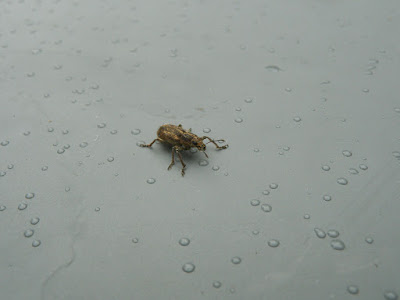I set both the actinic heath and MV Robinson moth trap yesterday evening on both sides of the garden. There was a modest catch, as would be expected on a March night, but whilst the MV won in terms of quantity (seven moths to four), the actinic won in terms of quality.
I will do well in the rest of this year to catch a better moth than the
Red Sword-grass Xylena vetusta that was in the actinic this morning. This is fabolous moth, and not really on my radar of possibilities for the garden. I love this about moth trapping, that something so unforeseen can suddenly appear. In hindsight, this is probably not that unlikely. The species likes damp woodland and moorland, and whilst it is not well recorded in Shropshire the flushes of the Long Mynd would appear to be suitable for this species.
 |
| Red Sword-grass Xylena vetusta |
The remaining moths were a little more mundane. though it was a nice selection of
Orthosia species that were also there to greet me - Hebrew Character
Orthosia gothica, named after the black markings likened to Hebrew letters, the plain but subtly beautiful Common Quaker
O. cerasi and the diminutive Small Quaker
O. cruda.
 |
| Hebrew Character Orthosia gothica |
 |
| Common Quaker Orthosia cerasi |
 |
| Small Quaker Orthosia cruda |
















